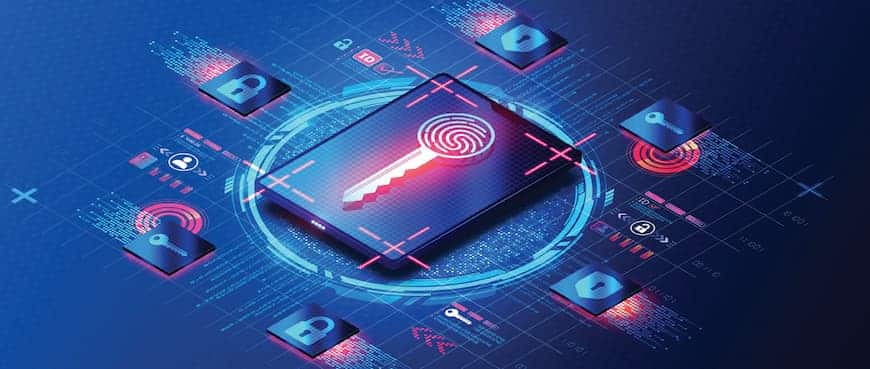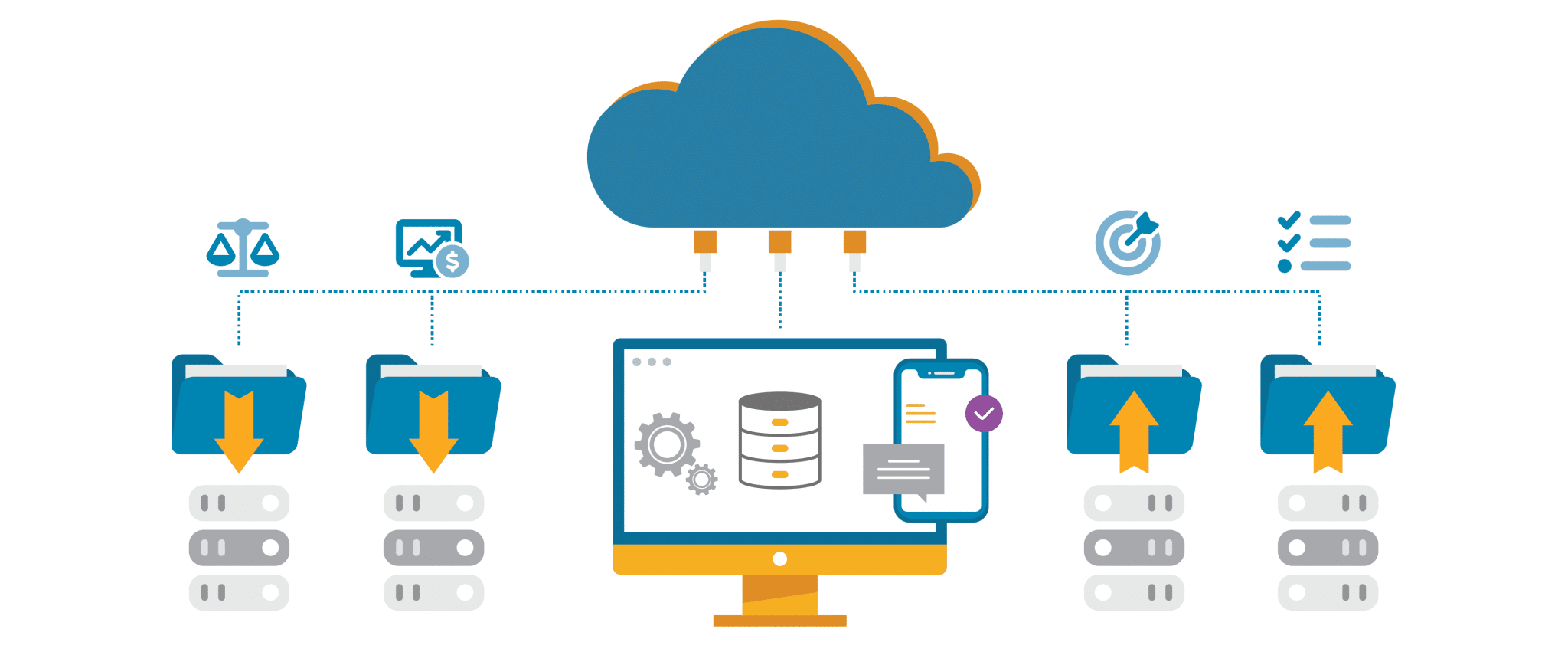In the fast-paced world of mergers and acquisitions (M&A), efficient and secure information sharing is paramount to successful deal-making. One technological advancement that has revolutionized the M&A process is the virtual data room (VDR). In today’s global business landscape, VDRs have emerged as a game-changer, enhancing data security during the due diligence process, bolstering confidentiality, and streamlining the transaction process. Today’s modern virtual data rooms bring a myriad of benefits to M&A transactions and the due diligence process:
Enhanced Data Security and Confidentiality

In a world where data breaches and cyber threats are on the rise, safeguarding sensitive information during confidential transactions is paramount. Virtual data rooms offer a wide range of security features to businesses and organizations seeking to securely share and collaborate on confidential documents, including:
- End-to-End Data Encryption: In this encryption method, information is encoded in such a way that only the intended recipients possess the necessary decryption keys to decipher the content. This ensures that even if the data is intercepted or accessed by unauthorized parties during transit, it remains unintelligible and secure.
- Granular Access Controls: Allow admins to customize document security policies at the folder, group, or user level.
- Role-based Access Controls (RBAC): Role-Based Access Control is a security model that defines and manages permissions and access rights based on the roles and responsibilities of users within an organization. Instead of assigning permissions directly to individual users, permissions are granted to roles, and users are then assigned to those roles. This ensures that users only have access to information they need to perform their jobs.
- Information Rights Management (IRM): IRM technology gives administrators the ability to revoke a user’s access to a document, even after it’s been downloaded.
- Two-Factor Authentication (2FA): Two-factor authentication is an additional security measure that requires users to provide two forms of authentication (such as a password and a code sent to their phone) in order to access the data room.
- Dynamic Watermarking: Watermarks provide a powerful deterrent to distributing printed documents to unauthorized users.
- Comprehensive Audit Trails: Audit trails give admins the ability to trace the chronology of activities within the data room by user and gain insights into their interest level and what they care about.
- IP Address Tracking: IP address tracking gives administrators the ability to identify users with built-in reverse IP address lookup by company and region.
- And More
With these robust security features and a large array of others, VDRs provide a powerful platform for enhancing data security and maintaining the utmost confidentiality during sensitive M&A transactions.
How VDRs Streamline the Due Diligence Process
A critical phase of any M&A transaction is the due diligence process. Due diligence involves the thorough examination of a target company’s financial, legal, operational, and strategic aspects to ensure that both parties have a comprehensive understanding of the risks and opportunities associated with the deal.
Traditionally, the due diligence process involved stacks of paper documents, lengthy meetings, and time-consuming correspondence between parties. This method was not only inefficient but also posed logistical challenges and significant security risks. The introduction of virtual data rooms marked a paradigm shift in how due diligence is conducted, offering a secure, efficient, and streamlined approach to managing and sharing sensitive information.
Here are some VDR features that help to streamline the due diligence process:
- Enhanced Security: A VDRs’ robust security features ensure that only authorized individuals can access the data room’s documents. This significantly reduces the risk of data breaches and leaks that can delay or derail a transaction. A VDRs’ granular access controls provide administrators with the ability to grant specific individuals access to only the documents that they need to see in order to complete their role in the transaction.
- Efficient Organization and Sharing: One of the most significant advantages of using virtual data rooms in M&A due diligence is the exponential increase in efficiency and speed of organizing and sharing sensitive documents with third parties. Traditional due diligence involved creating physical copies of documents, distributing them to potential buyers, and allowing them access within a controlled environment, such as a secured conference room. This process could take weeks, or even months, to complete. With VDRs, however, documents are uploaded electronically and can be shared instantaneously with authorized parties around the world.
Additionally, VDRs enable easy indexing and categorization of documents, making it effortless for users to locate specific information. Powerful search functionalities within these platforms further expedite the process by allowing users to quickly locate relevant documents and data. This streamlined approach significantly reduces the time required for due diligence, enabling faster decision-making and deal closures.
- Global Accessibility: In today’s global business landscape, deals often involve parties located in different parts of the world. VDRs enable secure access to documents from anywhere with an internet connection, facilitating collaboration among stakeholders regardless of geographical constraints and expediting the due diligence process.
- Real-time Updates: Documents in a VDR can be updated in real-time, ensuring that all parties have access to the latest information. This feature eliminates confusion and delays and helps maintain accurate records throughout the due diligence process.
- Reduced Time and Costs: With physical due diligence, arranging meetings, mailing documents, and waiting for responses can consume a significant amount of time and money. VDRs eliminate these logistical challenges, resulting in faster due diligence processes and reduced costs associated with travel and paper materials.
- Document Tracking and Auditing: Many VDR platforms provide a comprehensive audit trail that tracks who accessed which documents and when. This information can be invaluable in demonstrating compliance and accountability, especially in industries with strict regulatory requirements. Knowing which documents users are spending time with can also supply administrators with valuable deal intelligence, meaning user concerns can be addressed proactively, saving time and avoiding pitfalls.
- Collaboration and Communication: VDRs allow participants to communicate and collaborate within the platform, reducing the need for less secure external communication channels. This feature streamlines discussions, negotiations, and decision-making.
To learn other ways VDRs streamline the due diligence process, click here.
Virtual data rooms clearly offer a myriad of benefits streamlining and improving M&A due diligence, however, to make the most of these benefits, it’s essential to follow best practices when implementing VDRs in M&A transactions.
1. Choose the Right VDR Provider
Selecting a reputable and reliable VDR provider is the foundation of a successful implementation. Conduct thorough research to identify providers with a track record of security, user-friendly interfaces, and excellent customer support. Look for providers that offer granular permission controls, watermarking, audit trails, and encryption to ensure the confidentiality and integrity of the documents shared. Look for a VDR provider that has a strong track record in your industry.
2. Plan and Organize
Before uploading documents to the VDR, ensure that you have a well-structured and organized data room. Create logical folders and subfolders that mirror the due diligence checklist. Proper organization not only makes it easier for potential buyers to navigate the data room but also reflects positively on your organization’s professionalism.
3. Limit Access and Permissions
Control access to sensitive information by granting different levels of permissions based on user roles. Buyers, advisors, and legal teams should only have access to the documents relevant to their roles. This reduces the risk of unauthorized information leakage and enhances the confidentiality of the deal.
4. Implement Strict Security Measures
Security should be a top priority when dealing with confidential M&A data. Choose a VDR provider that employs industry-standard encryption protocols and complies with data protection regulations. Two-factor authentication adds an extra layer of security to user access. Regularly update passwords and ensure that security patches are applied promptly.
5. User Training and Support
Provide training sessions for all users involved in the due diligence process. A user-friendly interface doesn’t eliminate the need for orientation, as various features and security measures may require explanation. Offer ongoing support to address any technical issues or questions that arise during the process.
6. Maintain Version Control
During the M&A process, documents are often updated and revised. Maintain clear version control to ensure that all parties are working with the latest information. This prevents confusion and ensures that everyone is on the same page.
7. Regular Monitoring and Auditing
Utilize the virtual data room’s audit trail feature logging all user activity within the VDR. Regularly monitor these logs to identify any unusual or unauthorized behavior. Monitoring and auditing help maintain the integrity of the due diligence process and can serve as evidence in case of disputes.
8. Time-limited Access
Set expiration dates for documents based on the due diligence timeline. This prevents access to sensitive information after the deal is concluded or a specific phase of due diligence is completed. Expiration dates on documents can also be very effective at enforcing project timelines.
9. Watermarking
Consider using the VDRs’ watermarking feature on documents that users have permission to print. Customized, dynamic watermarks can be applied to each page of protected documents and spreadsheets, as well as to protected videos. Watermarks are clearly visible, applied diagonally across the page or screen, yet do not interfere with the readability of the underlying text. The watermark text is customizable, so admins can embed the following dynamic information:
- User’s name
- User’s email address
- User’s IP address
- Current date
- Current time
Watermarks provide a clear indication to the reader that the content is confidential, and since the user’s identity can be included in the watermark, it allows for a simple but effective deterrent against distribution of the printed documents to unauthorized readers.
10. Backup and Recovery
Choose a VDR provider that regularly backs up data and has a robust disaster recovery plan. Data loss can be catastrophic in M&A transactions, so having reliable backup and recovery mechanisms is crucial. Look for a VDR provider that provides multiple levels of redundancy at world-class data centers.
11. Consider Mobile Access
In today’s mobile work environment, it’s essential to ensure that the chosen VDR platform offers a secure and user-friendly mobile application. This allows stakeholders to access documents and perform necessary tasks on the go.
12. Transparent Communication
Clearly communicate the rules and expectations of the VDR usage to all parties involved in the transaction. Establish guidelines for appropriate behavior and document handling to prevent misunderstandings.
Best Practices for Conducting Due Diligence with a Virtual Data Room
Step 1: Set up the Virtual Data Room
Once you’ve decided on a VDR platform that has the security features and functionality tailored to your specific industry and deal, it’s time to begin the process of setting up the virtual data room. This includes creating and organizing due diligence folders, populating them with relevant documents, setting document policies, and inviting users with the specific permissions they need in order to review documents relevant to their role.
Step 2: Upload and Organize Documents
Once the VDR is set up and due diligence folders are logically organized, the next step is to upload relevant documents. These could include financial statements, legal contracts, intellectual property information, operational reports, and more. Organize the documents logically into folders and categories to facilitate easy navigation for users.
Step 3: Invite and Manage Users
Next, invite relevant stakeholders, such as potential investors or legal advisors, to access the VDR. Assign appropriate permissions to control what each user can view and interact with. Regularly monitor user activity through the audit trail to ensure compliance and security.
Step 4: Encourage Collaboration
VDRs are very good at facilitating collaboration among deal participants. Ensure that users are aware that they can ask questions, leave comments, and engage in discussions directly within the platform. This interactive element enhances the due diligence process by fostering efficient communication.
Step 5: Monitor User Activity
Throughout the due diligence process, administrators can monitor which documents are being accessed and by whom, often down to the page level. This type of deal intelligence gives administrators the ability to identify areas of interest and potential concerns and provides the opportunity to address these issues proactively.
Step 6: Close the Data Room
Once an M&A transaction is complete, virtual data rooms make it easy to revoke user access to the data room and either destroy the information within or archive it permanently. When shutting down a virtual data room it’s important to carefully consider the ongoing security and integrity of the sensitive information that was used to conduct due diligence.
- First, inform all authorized users that the VDR will be deactivated, allowing them to complete any pending actions or retrieve necessary data.
- Before shutdown, ensure that all ongoing activities are ceased, including document uploads, downloads, and user access.
- Perform a comprehensive review of the data room to confirm that all documents are in their proper folders and that access permissions are appropriately configured.
- Make sure to create a backup of the VDR’s contents for future reference if required.
- Finally, execute the shutdown, double-checking that all access points are locked, and all relevant parties are notified of the VDR’s closure. This careful approach guarantees the confidentiality of sensitive information and the successful closure of the virtual data room.
Conclusion
Virtual Data Rooms have become an indispensable tool in M&A transactions, offering efficiency, security, and flexibility. By following these best practices, organizations can ensure that their VDR implementation is seamless and contributes positively to the success of the deal. From selecting the right provider to maintaining strict security measures, each step plays a crucial role in safeguarding sensitive information and facilitating a smooth due diligence process.
ShareVault has been providing organizations of all types and sizes with secure document sharing solutions for over 15 years.






